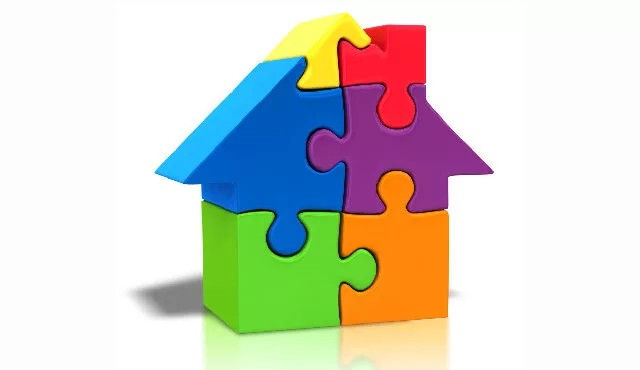After five straight months of record breaking home sales, the Southwest Michigan marketplace cooled its heels in October, fading by some 6-percent…but still an historically solid month’s activity. That’s the latest snapshot from the Southwestern Michigan Association of Realtors.
New Association Executive Philip Amodeo tells us, “The housing market in each of the last 5 months was record breaking in terms of number of houses sold, total dollar volume, and/or average and median selling prices. In October, the housing market, while very good, did not set records when compared to numbers and dollars achieved in the month of October looking back to 2006, our peak year.” He adds, “Year-to-date, 2016 has taken the lead as the peak housing market year across the board.”
Amodeo reports that in October, 326 houses were sold compared to 347 houses sold in October 2015 for a 6-percent decline. Year-to-date, the number of houses sold was up 6-percent (3,007 vs. 2,828). For the last six months, the numbers of houses sold exceeded 325 and reached as high as 388 in August. Typically, the number of houses sold in the last two months of the year drop to the 200 level. He adds, “Depending on how steep the decline will determine if the number of housing sales reaches the peak status in the 2006 to 2016 comparison.”
In his first official monthly report since taking over the reins from retiring Gary Walter, Amodeo says, “The average time a home stays on the market before it sells has dropped to 104 days in October, 2016, down from 132 days in October, 2015, a 21-percent decrease. Year to date, the time on market has dropped from 134 days to 119, an 11-percent decline. This is a positive trend, indicating that homes are selling at a faster pace than recent years.”
The average selling price in October fell to $201,242 from $214,237 in October 2015 for a 6-percent decrease. With fewer houses sold in October 2016, the total dollar volume dropped 12-percent ($65,605,024 vs. $74,340,313). Year-to-date, the total dollar volume was up 10-percent ($602,680.254 vs. $549,878,149).
Year-to-date, the average selling price was up 3 percent at $200,425 when compared to $194,155 in October 2015.
The median selling price in October increased 15-percent to $146,800 from $127,900 in October 2015. Year-to-date, the median selling price was up 4-percent ($140,000 vs. $135,000).
The median price is the price at which 50% of the homes sold were above that price and 50% were below.
At the end of October there were 2,069 houses on the market compared to 2,356 in October 2015. At this number the inventory had 7.1-months supply of homes for buyers. This was a decline from 7.5-months supply in September and 8.6-months supply in October 2015. “A ‘normal” or “neutral” market would have 5-6-months supply of homes. More than 5-6 months indicates a “buyers” market, while less than that indicates a “sellers” market. Our current trend is gradually improving, since it is slowly trending toward a more “balanced” market,” explained Amodeo.
The outstanding news was that the number of bank-owned or foreclosed homes as a percentage of all transactions in the market dropped to 8-percent. This was the lowest percentage for 2016 and since 2009. Since April the percentage has ranged from 8-12-percent. The percentage peak this year was 20-percent in March. The highest percentage, in February 2009, was 75-percent.
Locally, the mortgage rate was 3.58, up slightly from 3.54 in September. In October 2015, the rate was 3.95. Nationally, the Freddie Mac mortgage rate in October was 3.47 compared to 3.46 in September 2016.
According to the National Association of Realtors – Existing-home sales ascended in October for the second straight month and eclipsed June’s cyclical sales peak to become the highest annualized pace in nearly a decade. All major regions saw monthly and annual sales increases in October.
Total existing-home sales, which are completed transactions that include single-family homes, townhomes, condominiums and co-ops, grew 2.0-percent to a seasonally adjusted annual rate of 5.60 million in October from an upwardly revised 5.49 million in September. October’s sales pace is 5.9-percent above a year ago (5.29 million) and surpasses June’s pace (5.57 million) as the highest since February 2007 (5.79 million).
Lawrence Yun, NAR chief economist, says the wave of sales activity the last two months represents a convincing autumn revival for the housing market. “October’s strong sales gain was widespread throughout the country and can be attributed to the release of the unrealized pent-up demand that held back many would-be buyers over the summer because of tight supply,” he said. “Buyers are having more success lately despite low inventory and prices that continue to swiftly rise above incomes.”
Added Yun, “The good news is that the tightening labor market is beginning to push up wages and the economy has lately shown signs of greater expansion. These two factors and low mortgage rates have kept buyer interest at an elevated level so far this fall.”
The median existing-home price for all housing types in October was $232,200, up 6.0-percent from October 2015 ($219,100). October’s price increase marks the 56th consecutive month of year-over-year gains.
Regionally, existing-home sales in the Midwest sales grew 2.3-percent to an annual rate of 1.36 million in October, and are now 6.3- percent above a year ago. The median price in the Midwest was $181,500, up 5.8-percent from a year ago.
First-time buyers were 33-percent of sales in October, which is down from 34-percent in September but up from and 31-percent a year ago. NAR’s 2016 Profile of Home Buyers and Sellers revealed that the annual share of first-time buyers was 35-percent (32-percent in 2015), which is the highest since 2013 (38-percent).
On the subject of first-time buyers, NAR President William E. Brown, a Realtor from Alamo, California, says the Federal Housing Administration’s low-down-payment mortgage option helps many young and moderate income borrowers achieve homeownership. FHA’s just released (link is external) actuarial report shows the Mutual Mortgage Insurance Fund is on consistently solid financial footing, and FHA should take responsible steps to continue managing their risk while also addressing the high premiums and lifetime insurance requirements that often times dissuade would-be buyers from considering a FHA mortgage.
“To alleviate the cost for borrowers and better reflect the current risk in the marketplace, Realtors encourage FHA to reduce mortgage insurance premiums and consider eliminating ‘life of loan’ mortgage insurance,” he said. “These two moves would help the current homeownership rate recover from its near all-time low and give more prospective first-time buyers a more affordable financing option.”
All-cash sales were 22-percent of transactions in October, up from 21-percent in September but down from 24-percent a year ago. Individual investors, who account for many cash sales, purchased 13-percent of homes in October, down from 14-percent in September and unchanged from a year ago. Sixty-one percent of investors paid in cash in October.
Nationally, the total housing inventory at the end of October declined 0.5-percent to 2.02 million existing homes available for sale, and is now 4.3-percent lower than a year ago (2.11 million) and has fallen year-over-year for 17 straight months. Unsold inventory is at a 4.3-month supply at the current sales pace, which is down from 4.4 months in September.
“The ramp-up in housing starts in October is a hopeful sign that overall supply can steadily increase enough to provide more choices for buyers and also moderate price growth,” said Yun. “A prolonged continuation of the robust single-family starts pace seen last month (869,000) would go a long way in giving homeowners much-needed assurance that they can list their home for sale and find a new home to buy within a reasonable timeframe.”






